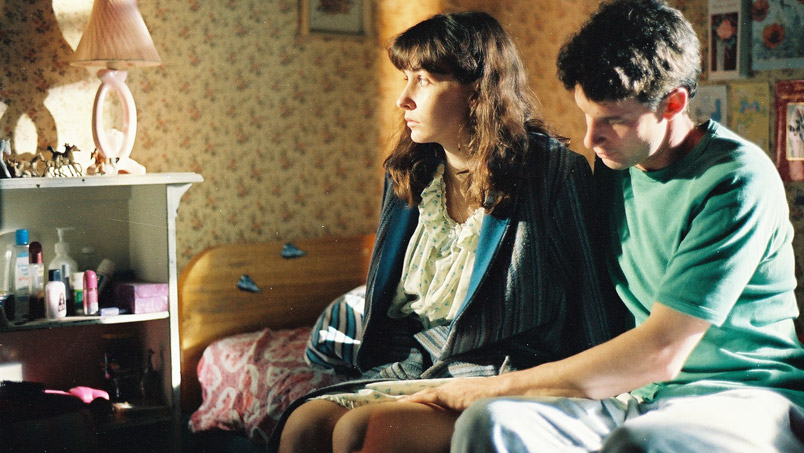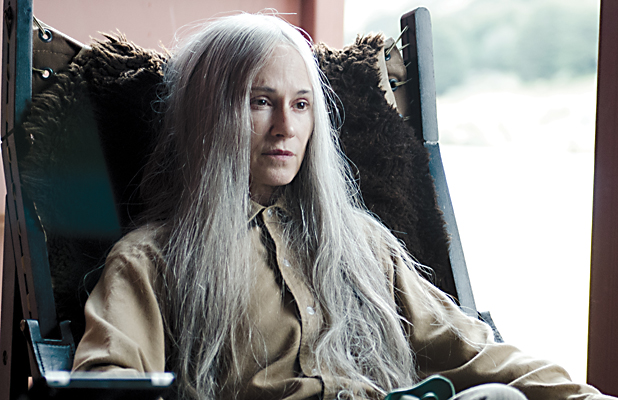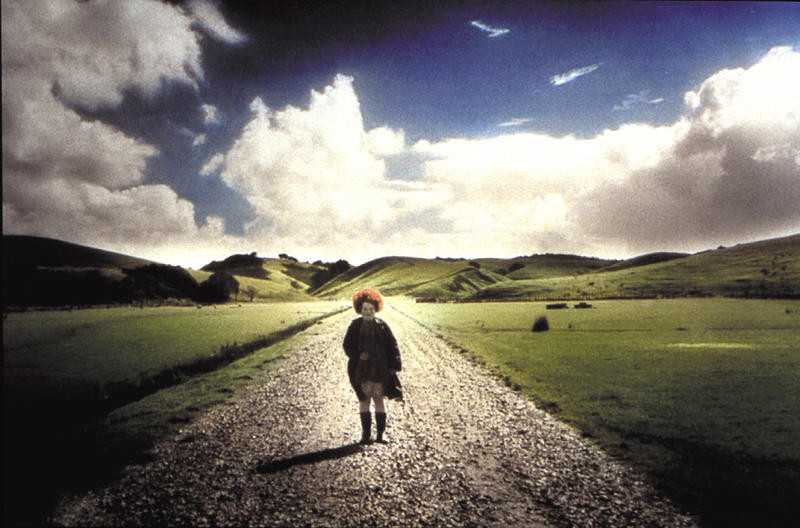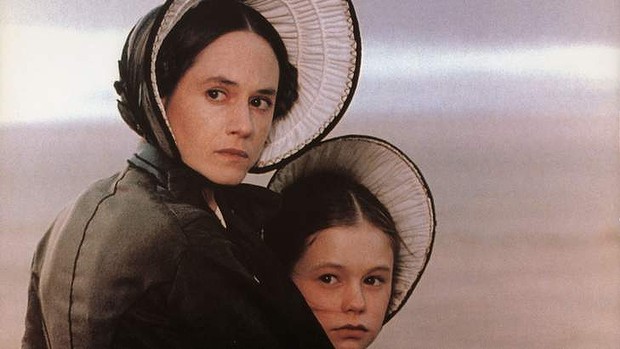4. Sweetie (1989)

Jane Campion’s debut feature, which was entered into the Cannes Film Festival, remains a highlight of her filmography. This surreal and strange take on a dysfunctional family relationship allows similarities to be drawn between Sweetie and Campion’s later works The Piano and Top of the Lake for its dark yet beguiling appeal.
Campion’s subtle exploration of sisterhood in In the Cut can be juxtaposed with Sweetie’s take on a dysfunctional love-hate relationship between sisters Dawn and Kay. Geneviève Lemon plays Dawn, otherwise known as Sweetie, the troublesome sister to Karen Colston’s Kay, who returns to town and disrupts the everyday as the sisters attempt to reconnect with their parents. The interruption of Sweetie into the family dynamic and the narrative causes instability and disruption.
The two sisters, Kay and Sweetie, are clashing personalities who are both trapped in their own ways. Sweetie is trapped by her mental illness, even though her parents are blind to what is wrong with her, and Kay is trapped as a result of Sweetie’s troublesome and disruptive character. They look different, they act different and they clash as a result of this. Kay is anxious and fearful where as Sweetie is outgoing and disruptive.
Sweetie is told from Kay’s point of view yet Campion expertly balances the sympathy between the two sisters and even though Kay is wary of her sister, Campion explores how Sweetie is still mysterious and has things to be admired about her. As this retrospective has proven, Campion’s characters across her filmography are all multifaceted and not just shown to be one certain way.
Campion doesn’t shy away from depicting the ugly and tough depictions of the familiar and the everyday. The film is set in Australia in the present day yet Sally Bongers’ cinematography is bright and heightened, making the setting and atmosphere feel even more strange, surreal and otherworldly. This is a bold and exciting debut for Campion which is a quirky and comedic tragedy which feels relatable yet is still perplexing and unique.
3. Top of the Lake (2013-2017)

In the second episode of Top of the Lake: China Girl, Detective Robin Griffin’s wedding dress is set on fire against the backdrop of the vast and beautiful New Zealand landscape. The astonishing and memorable image symbolises everything both series of Jane Campion’s acclaimed Top of the Lake questions about womanhood and patriarchal values within society. It is a lasting image that, like the series, is not easy to forget.
The first series of Top of the Lake follows the case of the disappearance of Tui Mitcham, a twelve year old girl who is five months pregnant. In a Golden Globe winning performance, Elisabeth Moss plays Detective Robin Griffin who returns to her small and remote hometown in New Zealand to lead the investigation. The mystery that unfolds is dark and disturbing and filled with unforgettable performances.
Peter Mullan plays the hyper masculine and brutal Matt Mitcham, Tui’s father, who is the local drug lord amidst this tight knit community. His character is monstrous, violent and personifies the worst traits of toxic masculinity yet Campion still constructed him as multifaceted, even showing him at times to be vulnerable and creating sympathy for him. Holly Hunter returns to working with Jane Campion as GJ, a strange and enigmatic guru at local women’s camp Paradise. This community of damaged women clash with Matt Mitcham who considers the plot of land to be his property.
The result is an expertly crafted mystery and a character study of the detective. The revelations about the traumatic events of Robin’s past lead the viewer to understand the affiliation Robin feels for the case and for finding Tui. Robin has to confront her own demons to find out what has happened to Tui and what has been happening in this town. Along the way she has to confront men who are powerful and who have done wrong, to both her and to others, amidst this cinematic landscape. Campion includes horrifying flashbacks to remind the viewer of what Robin has endured and the overall series’ exploration of rape culture is groundbreaking.
The New Zealand landscape is captured as a powerful and brooding backdrop to the events that unfold. Water imagery is prevalent in the series, as the viewer is first introduced to Tui standing waist deep in a vast lake. This adds to the cold and unsettling atmosphere. Strange things happen in this community yet the viewer is reminded that this firmly exists in reality.
In series two it is hard not to miss the atmospheric backdrop of New Zealand that worked so well in series one. It is also hard not to miss the great Holly Hunter who doesn’t return as GJ. However, Nicole Kidman and Gwendoline Christie in particular are wonderful additions to the cast. Following up an acclaimed first series will always be hard and Top of the Lake: China Girl is very different to the show’s previous series.
Returning four years after the show’s original broadcast, Top of the Lake: China Girl is set in Sydney where Robin investigates how an unidentified Asian girl died when her body is discovered in a suitcase washed up on Bondi Beach. The series is set five years after the events of Top of the Lake, as Robin is trying to get her life back on track again yet still being haunted by the events of what happened to Tui and her own child she gave up for adoption eighteen years earlier.
Jane Campion’s own daughter Alice Englert plays Mary, Robin’s eighteen year old daughter who Robin gave up for adoption after her brutal sexual assault. In the same way that Top of the Lake was about rape culture, Top of the Lake: China Girl is undoubtedly an exploration of motherhood and this is tackled through different instances of mothers and daughters in the series. Nicole Kidman plays Julia, Mary’s adoptive mother and the series follows Mary’s rebellious nature and how she clashes and has to come to terms with both of the mothers in her life.
In both series Campion successfully constructs suspenseful mysteries which are intriguing but are merely set pieces which allow for the rich storytelling and take down of the patriarchy to take centre stage.
2. An Angel at My Table (1990)

Janet Frame’s three part autobiography is largely considered to be one of the greatest autobiographies of the twentieth century. Frame’s account of her life from her impoverished childhood, to her misdiagnosis of schizophrenia to her discovery of her love of writing and her success as a writer is transformed into a remarkable adaptation by Campion which became the first film from New Zealand to play in competition at the Venice Film Festival.
The film follows a conventional three part structure as it was originally released as an episodic miniseries. The first part focuses on Janet’s childhood and the viewer is introduced to the shy, socially awkward red haired outsider who faces the first of a series of unimaginable family tragedies which leads her to decide to become a poet. In the second part, her depression is misdiagnosed as schizophrenia and her exploration of her young adult self and of her creativity is cut short when she is sent away to a psychiatric ward where she undergoes electric shock therapy for the next eight years.
The third part follows her finding an escape through her writing as she is now a fully grown woman played by Kerry Fox. Janet Frame struggles to fit in at these different stages of growing up as she is alienated from society and Campion presents a sympathetic look at her tragic life and how she overcame these many barriers that could have prevented her from achieving her deserved success.
Like in her other films including Sweetie and Bright Star, Campion finds the poetic and the beautiful in the everyday in An Angel at My Table. The New Zealand landscape provides a beautiful backdrop to the events which unfold. The film is successful at portraying a woman struggling with her sense of self and Campion shows how she overcomes the tragedies which consume her to find an escape in her writing. The journey that is depicted is moving and intricately captured by Campion as the horrifying reality of Janet Frame’s life is depicted with great attention to detail.
1. The Piano (1993)

The Piano remains Jane Campion’s best and most iconic piece of filmmaking. Holly Hunter and Anna Paquin won Academy Awards for their performances as a mother and daughter sent away to New Zealand in the nineteenth century after Hunter’s Ada McGrath is set up in an arranged marriage with Sam Neill’s Alistair Stewart.
What follows is an exquisitely crafted exploration of the female experience and in particular the relationship between a mother and daughter amidst a new and strange setting. Ada is mute and Flora, played by Paquin, is the only one who is able to communicate with her mother which further reinforces the mother-daughter bond which has been threatened by male interference. They move to New Zealand from Scotland and are thrust into this new world where they have to interact with men; in this land they are outsiders and they are trapped within their circumstances.
The film follows the complexities of Ada’s life when she begins an affair with the mysterious Baines, played by Harvey Keitel. Campion’s handling of the gender dynamics in the affair is groundbreaking and refreshing as she reverses the gaze to focus on Ada’s point of view during their sexual encounters.
Ada’s playing of the piano is how she uses her voice, yields her agency and exhibits a partial escape for herself and her daughter. Michael Nyman’s score is sensational and encapsulates the emotional turmoil which unveils throughout the film. There is a purpose to the music Ada is playing and this is clear in the score which is haunting and evokes the feeling of the film on its own.
At the climactic moment in the film, when Stewart enacts a heartbreaking act of violence against Ada to remove her agency and her freedom through her playing of the piano, Nyman’s score stops and the silence is palpable. The shock and despair in this moment as Ada takes moments to register what this chopping off of her finger means for her piano playing is perfectly captured in Holly Hunter’s exquisite performance.
The original ending of The Piano was much bleaker and Campion has expressed her regret at not killing off Ada during the surrealistic attempted suicide. She believes it would have been more believable, yet the hope in that image remains a remarkable moment in cinema. The image of the piano pulling Ada down to the depths of the ocean before she struggles free is haunting and powerful. The viewer only hears Ada’s voice at the beginning and end of the film, and it is important that she survives this attempted suicide and reclaims back her voice as well as her agency.
‘At night! I think of my piano in its ocean grave, and sometimes of myself floating above it. Down there everything is so still and silent that it lulls me to sleep. It is a weird lullaby and so it is; it is mine.’
Author Bio: Hannah Sayer is a recent English Literature graduate who loves watching and writing about cinema. Some of her favourite directors include Jane Campion, Denis Villeneuve and Nicolas Winding Refn.